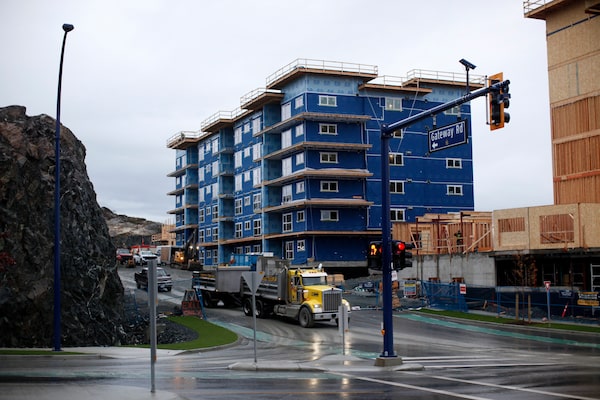
The national housing strategy provides resources for developers to refurbish old apartments and build affordable housing units, among other initiatives.CHAD HIPOLITO/The Canadian Press
The federal government’s plan to boost affordable housing units for Canadian residents will cost more than $89-billion, according to a new estimate from the non-partisan budget office.
That is higher than Ottawa’s budget of about $82-billion to administer its national housing strategy, which provides resources for developers to refurbish old apartments and build affordable housing units, as well as funding and tax breaks for individuals to find housing.
The Parliamentary Budget Office estimates that just over half of the increase in costs stems from a new fund to help quicken the pace of construction, according to a report it released on Thursday. The remainder comes from additional capital to help build more affordable housing units, expand into co-operative housing, and provide certain residents with a one-time $500 payment to help deal with rising rental costs, among other expenses.
The PBO said rising construction expenses will impede the government’s push to develop more housing.
“While federal spending to provide affordable housing and address homelessness has increased, so too has the cost of residential construction, reducing the real purchasing power of federal spending,” said the report authored by PBO economists Carleigh Busby and Lisa Barkova.
Growing costs for materials, loans and land have pushed up the price tag for new residential development. As well, a shortage of construction workers has added to overall building expenses, making it much more expensive for developers to build, especially apartment buildings and affordable units.
Meanwhile, higher interest rates have made it harder for would-be buyers to qualify for a mortgage. That has led prospective buyers to stay in their rentals and reduced the number of units available to rent. Canada’s apartment vacancy rate was 1.9 per cent last year, the lowest level in more than two decades.
At the same time, an influx in newcomers to the country has increased competition for housing and has driven up rental rates.
Policy makers are under pressure to deal with the growing unaffordability problem. Under some of the federal loan programs, developers are required to set aside a percentage of their building units for affordable units.
But the PBO report said the national housing strategy does not have a standard definition of affordability and that can lead to the construction of units presented as affordable when they are not.
The housing strategy was introduced in 2017 amid the real estate frenzy in Toronto and Vancouver. It initially had a $40-billion budget to be spent from 2017 through 2028.
But as the country’s affordable housing problem has worsened, the budget for the housing strategy has doubled. The 10-year plan now includes a bevy of programs such as shared-equity mortgages for first-time home buyers.
The federal strategy is administered largely by the national housing agency, Canada Mortgage and Housing Corp., whose responsibilities have since expanded from its primary role of providing taxpayer-funded mortgage insurance.
The feds have estimated that the country needs 3½ million new homes by 2031 to house a growing population. That would require housing starts to double from an annual average of around 200,000 units to nearly 400,000.